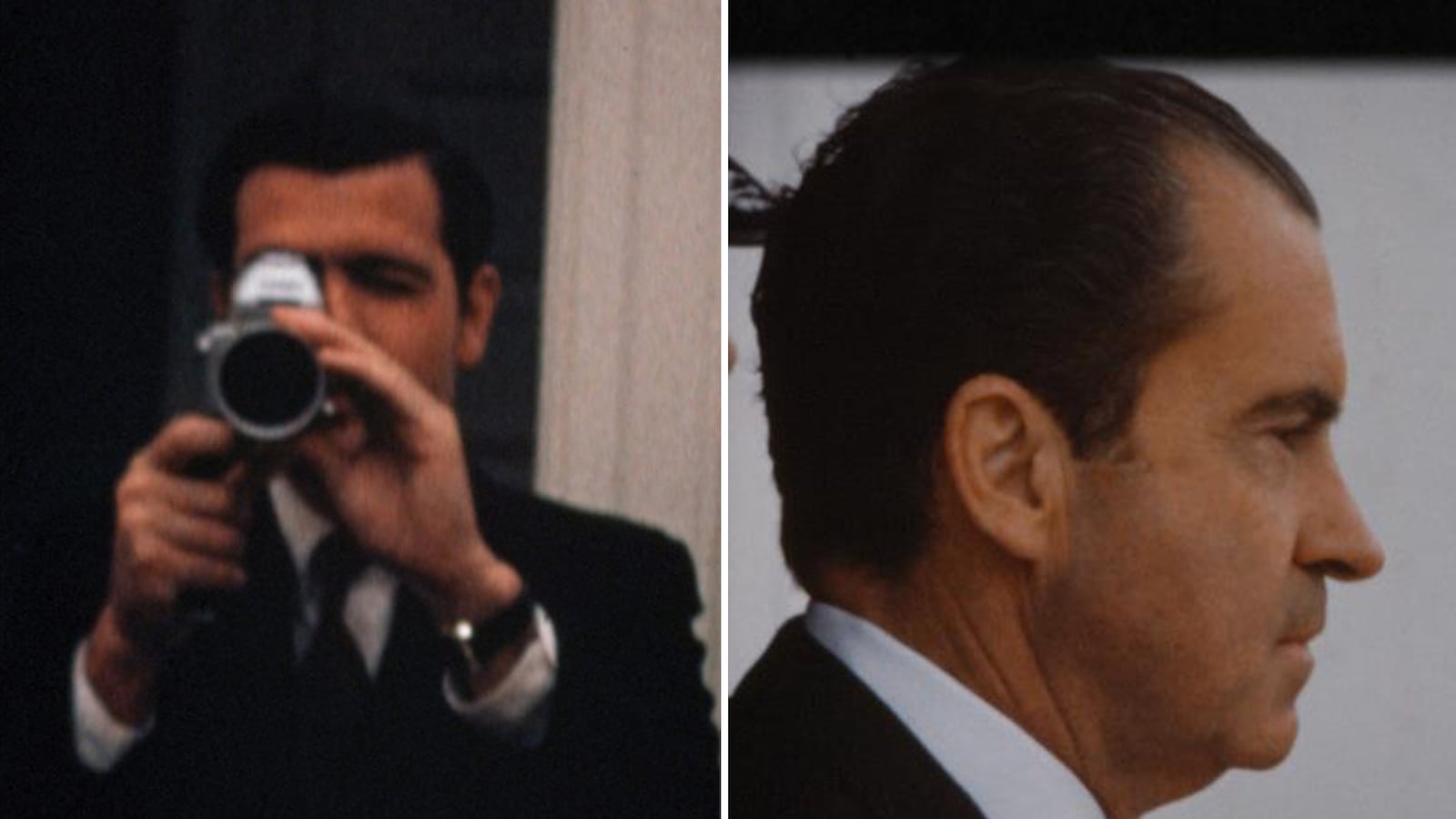Back in the day when Super 8 cameras were all the rage, three of President Richard Nixon’s top aides filled hundreds of reels, leaving behind a never-before-seen film diary that tracks the administration from its early exuberance through the slow unwinding of Watergate.

Alerted by a friend hired by the National Archives to make preservation copies of the 500 reels that had been seized by the FBI some 40 years ago, independent filmmaker Penny Lane and her co-producer, Brian Frye, got access to the films, which are available to the public.
The result is Our Nixon, an 85-minute documentary based on those home movies shot by Bob Haldeman, John Ehrlichman, and Dwight Chapin, who were all indicted for crimes related to Watergate and served time in prison. “I knew their names because I went to college,” Lane said at a screening in Washington at, appropriately, the Watergate, and she thought of them as “stonewalling henchmen.” Watching 24 hours of film (each reel is three minutes) complicated the caricature she grew up with, and she was determined to make a film that would humanize the characters in the tragedy that was the Nixon administration.
She succeeds brilliantly in her portrayal of these men, the White House parties and the pranks, the camaraderie, the hubris that brings it all down. Lane is too young to have lived through the Nixon era, and she wondered while screening the footage why they shot so much in China. “I hate to out myself,” she said, confessing her co-producer had to tell her that Nixon’s opening to China was “a big deal.” The fact that she knew so little about Nixon and his apparatchiks is what makes this documentary so special. Through her fresh eyes, the viewer gets to know them, and to care about them, to see the way they thought and what they went through. Asked if she ended up liking them, she replied, “Yes, to the point I had to check myself.”
Ehrlichman is the most sympathetic. What she calls his “artistic temperament” comes through. He says being at the White House is like being on “a great big brilliantly lighted, badly directed television show.” He didn’t consider himself a partisan, said if someone had come calling from the Kennedy camp, he would have gone to work for JFK. As the Watergate scandal closes in—and he and Haldeman are with Nixon to dedicate an aircraft carrier to Mississippi Sen. John Stennis—Ehrlichman says that for about 30 seconds standing on the flight deck he thought he could crash this plane and put an end to everybody’s problems. At the end of the film, Lane shows Ehrlichman as an ice-cream pitchman, wise-cracking that he knows all about meltdowns. Consumer reaction to the commercial was so negative it was immediately withdrawn.
Haldeman is the most inaccessible to the camera’s probing eye, rarely departing from the Germanic crew-cut drill-sergeant caricature that he nurtured. “He literally had no ego at all,” says Lane. “He totally didn’t care about his own image… and he thought that was the ideal White House staffer.” He and Nixon gossip about Henry Kissinger, who Nixon calls “a swinger.” The president is furious about an interview Kissinger gives to “that Italian girl,” (Oriana Fallaci, a famous journalist) appearing to take credit for the China opening. Nixon gripes about how Kissinger defers to him in public, but in private conversations, “where it counts,” builds himself up.
With Watergate closing in, Nixon fired Haldeman and Ehrlichman in a fruitless effort to insulate himself. “I hope I didn’t let you down,” he tells Haldeman afterward. “You’re right where you ought to be,” Haldeman replies, ever the good soldier. “I’m never gonna discuss this son-of-a-bitch Watergate thing again—never, never, never, never,” Nixon vows. Then he wants to know how his televised announcement is being received, asking Haldeman to call him back with the information. The fired Haldeman declines this time, but it was his role to supply the affirmations that the painfully needy Nixon required after every speech.
Dwight Chapin is the least known of this troika, and was the first to be fired. He is seen on camera describing how he went to the men’s room to “pull myself together” only to find Attorney General Richard Kleindienst “throwing up and bawling like a baby.” He had just met with Ehrlichman, learned how dire the situation was, and would soon be cut loose along with Haldeman and Ehrlichman, and White House counsel John Dean.
Lane said she started out wanting to make a movie that wasn’t about Watergate, but that turned out to be impossible. She does succeed in showing that the administration wasn’t “one big Watergate conspiracy,” that there was a lot the various players didn’t know about each other, or about what was coming next. As Ehrlichman puts it, “[Nixon] kept little watertight compartments of information, and it didn’t work very well.” Ehrlichman, for one, didn’t know there was a taping system in the Oval Office.
Our Nixon opens in 20 cities beginning August 30. Lane says she hopes that in addition to the venality and homophobia that people will hear, she hopes they also see the humor and the pathos in these home movies, as they go behind the mask of power in a very human way. “In the henchman model of history, you don’t think there was any happiness,” says Lane. “But to travel the world with Nixon was totally exhilarating.”






